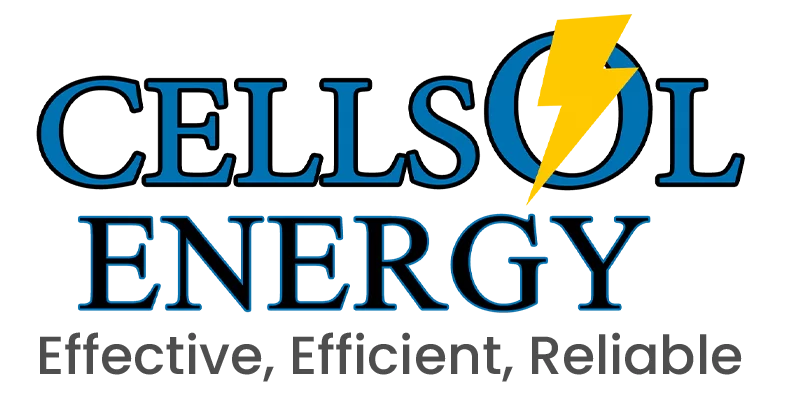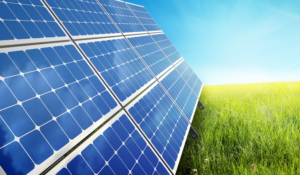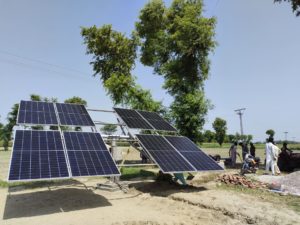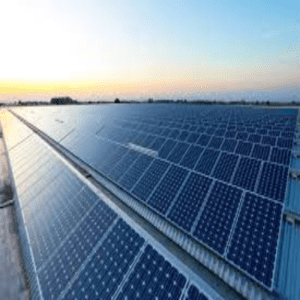The solar panels you see on home rooftops are most frequently linked with solar energy collecting. However, the commercialized acceptance of solar energy harvesting covers a wide range of uses that give the globe incredible amounts of energy. Let’s examine five avant-garde methods for capturing solar energy.
Photovoltaic Solar Panels
PV solar panels use the energy of the sun to produce an electricity flow. Currently, this method of using solar energy is the most popular. These panels are made of several PV cells that are organized in a complex matrix and range in size from a few square centimeters to a few square meters. It seems sense that more solar energy would be captured if sunlight could reach a bigger surface area of the PV cells.
A compound semiconductor wafer structure, which may be monocrystalline or polycrystalline, makes up the majority of each PV solar cell. The two thin semiconductor wafers of the structure, one P-type and one N-type, are produced independently. When the two wafers are stacked on top of one another, the two semiconductor kinds naturally react, creating a depletion zone that eventually reaches equilibrium without producing any electrical current. The PV cell causes an equilibrium disruption in the depletion area when light photons pass through and contact with semiconductor wafers, releasing enough energy to do so. The result of that action is a transient electricity flow.
Over the whole surface of the PV cell, a single photon interaction generates power. It is combined to create a full solar cell panel and eventually a sizable PV panel array. A considerable amount of electricity can be produced by repeating and multiplying this small interaction in the depletion zone. However, PV solar arrays generate DC power. This DC energy needs to be transformed into AC power with the help of an inverter in order to be used with current power transmission systems, such as the outlets in your home. This fundamental technology has undergone a number of proprietary modifications that aim to improve the molecular efficiency of each PV cell, the panel’s construction, and the panel’s integration capabilities.
Harvesting Thermal Energy from Electromagnetic Radiation
The sun emits a wide range of energy with a variety of wavelengths, including infrared. To bodies that can absorb it, this spectrum effectively transfers thermal energy. As the color black absorbs all wavelengths of radiation that are visible to the human eye, substances that can efficiently absorb this thermal electromagnetic energy are known as “black bodies.” All of the electromagnetic radiation’s wavelengths can be properly absorbed and emitted by an ideal black substance.
Long before the invention of current passive heating systems like thermal solar panels and thermosiphons, electromagnetic radiation was employed for heating in a variety of passive heating systems, including the egg-cooking example, Roman bathhouses, and Ancient Egyptian residences. These thermal solar energies collecting techniques heavily depend on the properties of black body radiation, specifically their capacity to absorb and transmit electromagnetic radiation. Thermal energy is most frequently obtained for use in home water heating systems. These options, however, are less suited for energy production on an industrial scale.
Solar Water Heaters
A solar water heater is an excellent illustration of a thermal solar energy harvesting application that is frequently used in sunny locations worldwide. A pump is used to move cool water through a black body panel in the most basic solar water heater configuration. This has a similar aesthetic to a photovoltaic solar panel because the black surface effectively absorbs thermal energy, which is subsequently cooled by the moving water and used to heat the water. Throughout the sun activity, the water is continuously pumped through this loop to produce warm water. By leveraging the buoyancy that the heated water creates, some systems are able to do without a pump mechanism. The colder water sinks while the warmer water “floats,” generating a system with little flow and a thermosiphon.
Vacuum Tube Solar Water Heater
Vacuum tubes and self-contained heat pipes are used in more sophisticated and effective solar water heating systems to transport thermal energy to a secondary tank. Radiant energy can enter the system with the help of the vacuum tube, but all thermal energy conversion occurs inside the tube. This energy is absorbed by the heat pipe and then transferred to the big water tank. Due to the tiny amounts of thermal energy that escape the vacuum tube and the virtually complete conversion of radiant light into thermal energy, these systems are substantially more effective in heating water during the colder months.
Molten Salt Solar Power
The limits of solar energy-based power generation are being pushed by relatively recent advances in molten salt systems. Molten salt power plants, on the other hand, use electromagnetic radiation to melt salt, similar to the solar-powered water heating systems that were previously mentioned. After being passed to a heat exchanger, the molten salt heats water into steam, which is then used to power a steam turbine. In order to focus sunlight on a single location, sometimes referred to as a power tower or central tower, molten salt power facilities.
The Future of Solar Energy
In place of fossil fuel-based electricity, solar energy collecting technology is being used more and more. Solar energy harvesting techniques come in a variety of forms, but they all essentially rely on the sun to carry out tasks in a desired way—tasks for which we typically use electricity. The productivity of solar energy harvesting activities will continue to be revealed through efficiency improvements and process optimization, and it may be possible to completely do away with the usage of fossil fuels.






